Text
Trip to Raval
In the city of Barcelona lies a neighborhood known as Raval. There are many different public spaces in this area such as the town hall, CCCB, Convent Dels Angels, La Boqueria, libraries, bars, cafes, shops, and most importantly parks. The area was historically more dangerous and at risk for drug use compared to some of its neighboring spaces, but the government has been focusing on investing in the people to turn it into a nicer area. These photos show a theatre as well as the la Boqeria market, a tourist hotspot destination in raval. The third photo focuses on a small tucked away square of bars, restaurants, and a nice park where people can enjoy themselves and relax.

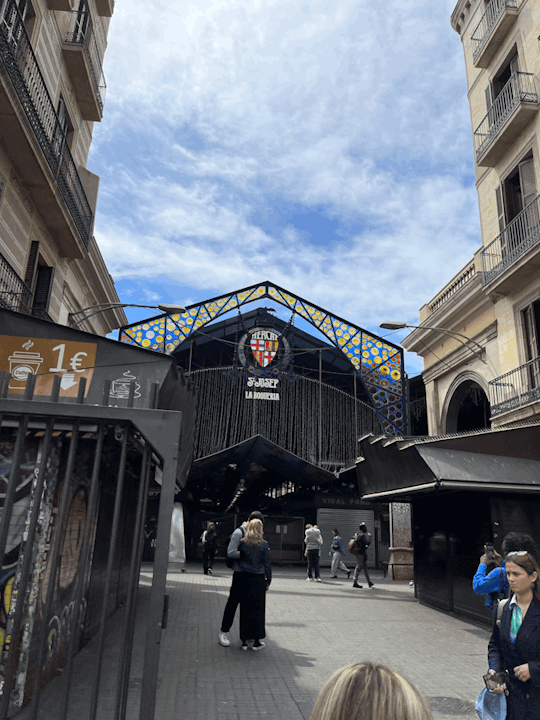

Raval is located in the center of the city, running from below Eixemple down to the port. It splits Las Ramblas down the center with the Gothic Quarter. The centralization of the neighborhood is partly why the government has been making efforts to transform the area to a useful and nice space for the public. Similar to the Gothic Quarter, Raval has small, narrow streets. One of the key goals for Raval is to create a space for the youth to go to and hang out in.
Some of the public buildings in the area are UB, CCCB, Casa de la Misericordia, Church of Casa de la Misericordia, Convent dels Angels, amongst others. UB is the most important and oldest university in the city, and is responsible for why there is a large space in the center. CCCB is the Centre Cultura Contemporales Barcelona, the convent de las Maries converted into a museum with the name stemming from the Soviet Union (CCCP). Convent dels Angels is a public kindergarten school, and the houses, bookstores, and open spaces around it also serve as beneficial places for kids. La Casa de la Misericordia is a nonprofit institution devoted to helping vulnerable members of the community.
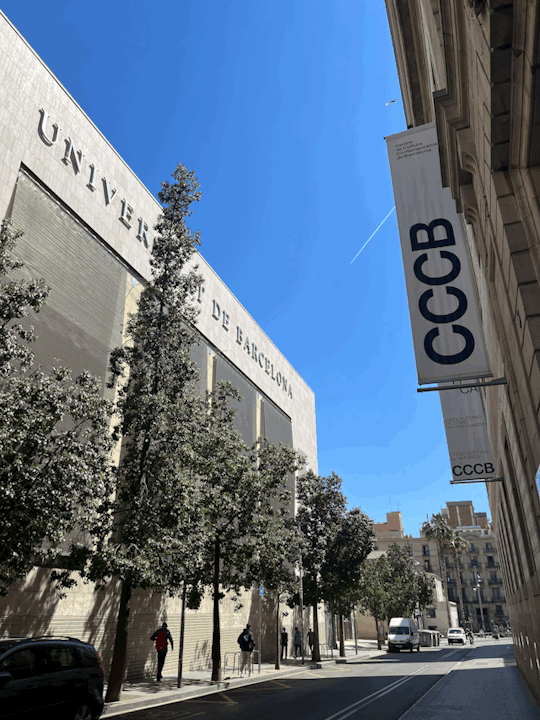
The neighborhood is also home to a multitude of signs that exemplify how this area has been targeted towards the youth in the area. There are many different bars, stores for younger crowds, open spaces, bookstores and adjacent spaces for the university students, contemporary art installations, street art, and signs clearly made by or for the youth. For example, there is art all over the buildings such as the work using real hair on an entirely bright pink painted building shown in the picture below, or the sign for skaters on the building because the city knows there are a lot of young skaters in the area.

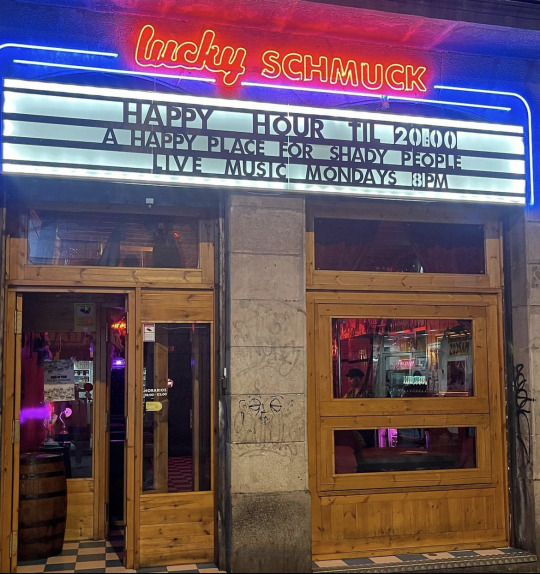

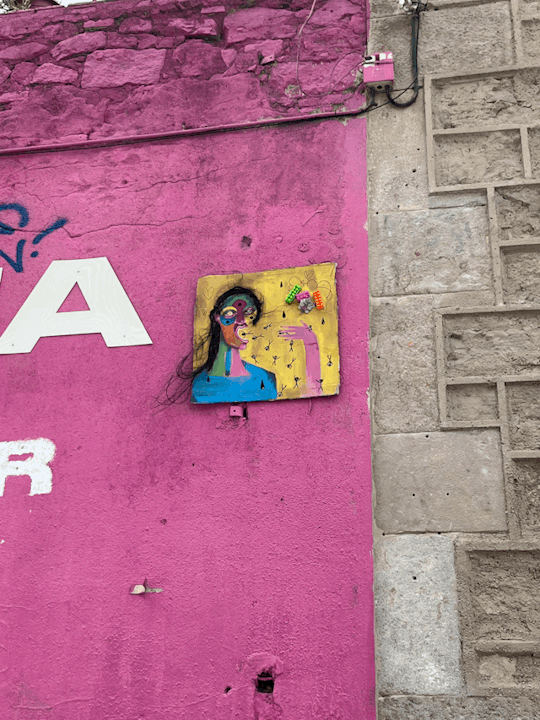
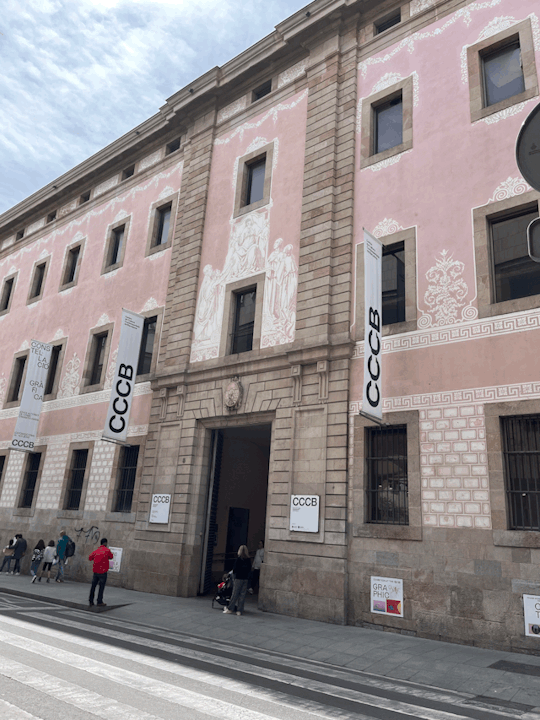
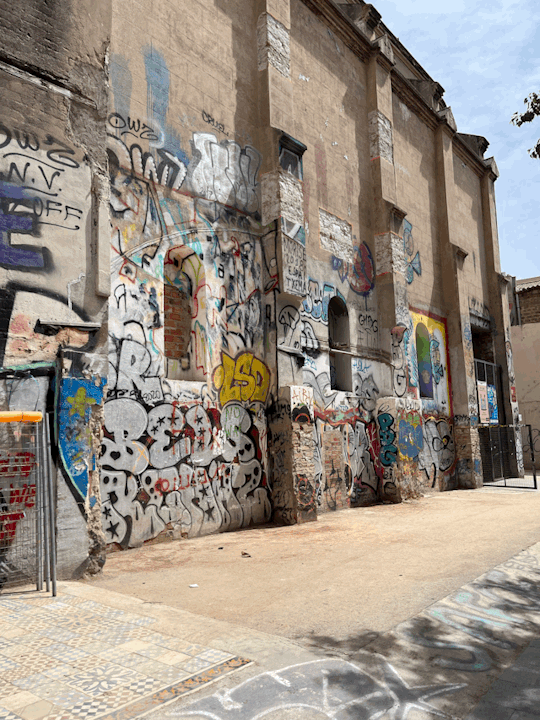
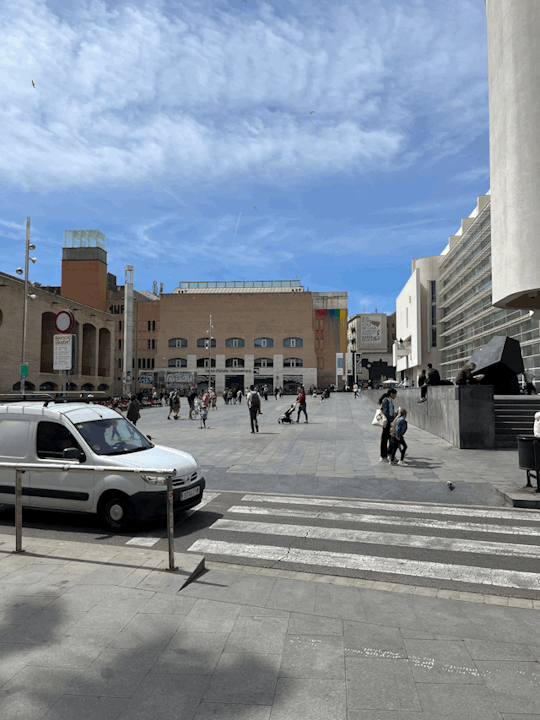
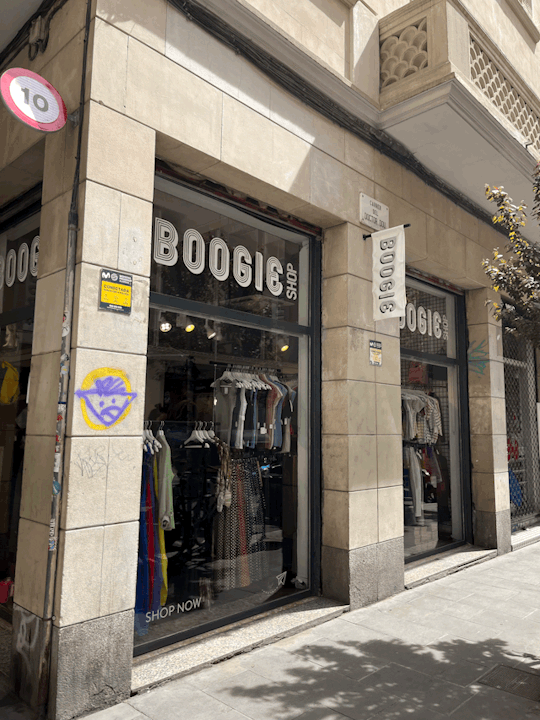

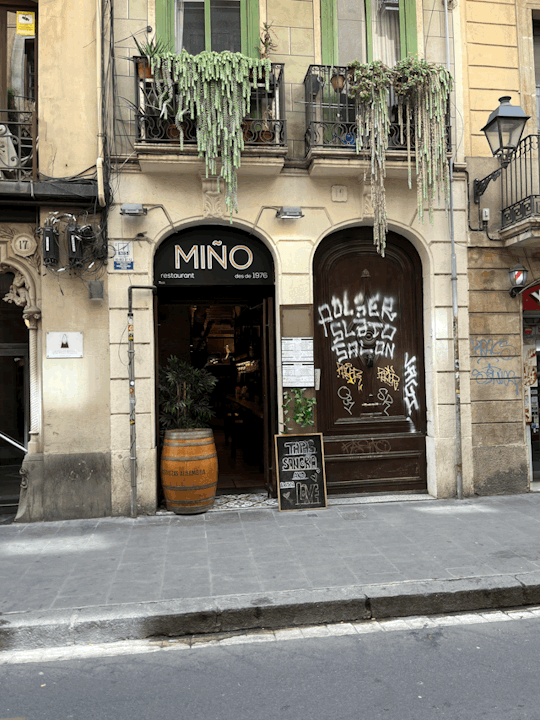
I think that Raval is an important neighborhood in Barcelona to focus time and money into because it is not only centrally located, but it also has a rich history and provides a space for youth to congregate. In the past, there were fields and other recreational outdoor areas, but with the construction of the city these spaces were built over, and left the young crowd with nowhere to go. Not to mention, many of the buildings in Raval are old refurbished or repurposed buildings that are being utilized and preserved for modern purposes rather than destroying that part of culture. Raval's history preserves Catalan Culture in the walls of the buildings and the spaces it creates for young people to meet up, as well as the Pakistani and other immigrant population that it houses to enrich the city in other cultures. While it is still an area that has minor prostitution and drug dealing on some corners, it is much more livable now than it used to be, and the people who live there feel much more comfortable which is the main goal.
0 notes
Text
Medieval Catalonia
In la Ribera Quarter of Barcelona, many of the narrow streets are named after certain trades or different types of craftsmanship. Some examples of these are: C/ de Banys Vells, C/ dels Corders, Placa de la Llana, C/ de les Semoleres, and C/ de Colomines. 'Els Gremis,' or the Guilds, refer to a certain group of craftsmen or workers of a specific trade coming together in one place. This created the names of the roads, because certain people doing the same job all resided in the same area.
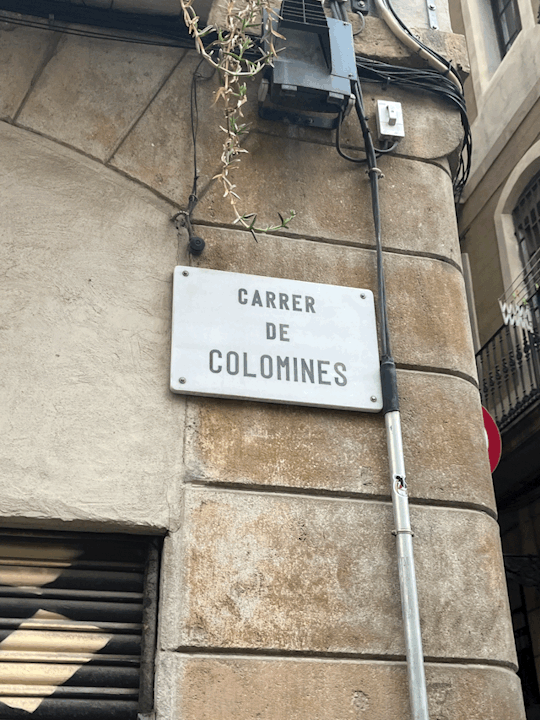
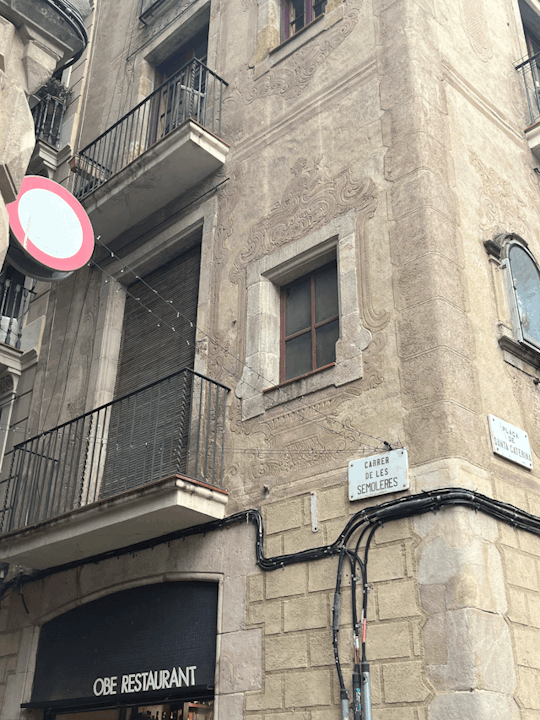
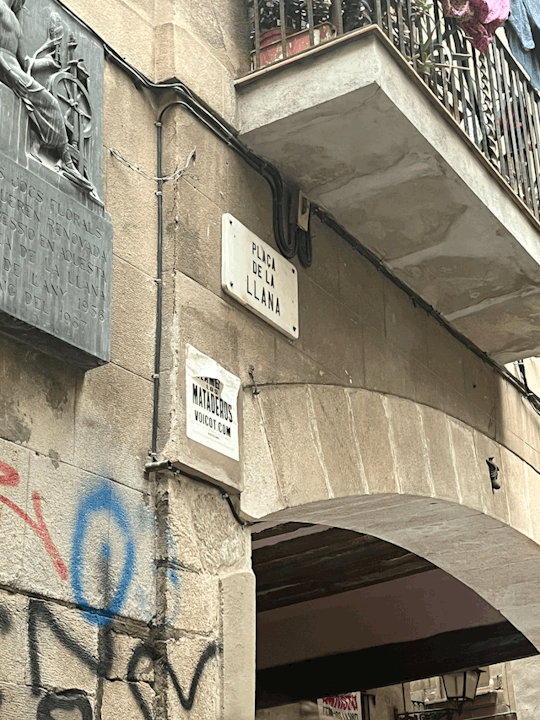
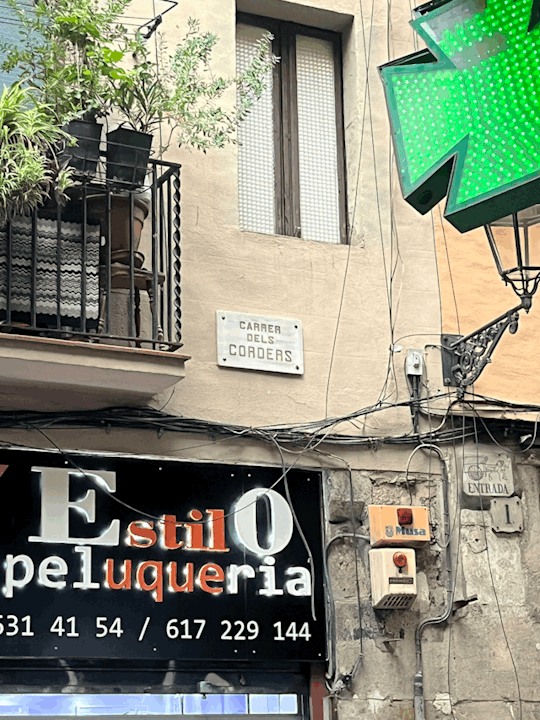
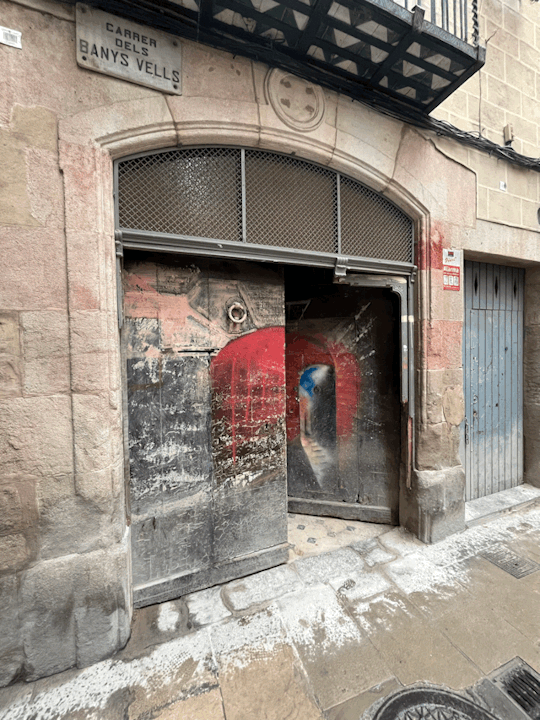
The typical house-workshop, or "la casa-taller" in medieval Catalonia was a space that a family could use to both live and work in. These homes would have the space for utilizing trade and serve as a storefront at the street level, and then the families would reside above the open entrance to the store below. This is exemplified in the photo below, where you can see the storefront with the many windows above signifying the different residences. Another thing to note about the architecture of these spaces was the difference in size of windows, because the lower to the ground the larger the windows, and at the top there are very small windows. These buildings were typically 5-6 stories. Therefore, because all of the apartments were connected by very small, narrow staircases, the higher up and more inconvenient a residence was, the cheaper it was, and lower class inhabitants such as house staff would live up at the top.

There is a stark difference between industrial and craftsmanship buildings in medieval Catalonia as well. For example, the craftsmanship buildings typically followed the Casa-Taller style as exemplified above so that the tradesmen are able to sell their goods on the ground level. The casa-taller buildings were constructed out of very strong stone, whereas the industrial buildings opted for cheaper, mass produced materials. This, in turn, created an entirely different exterior look of the industrial buildings which was much more harsh. Iron was typically utilized, as after the industrial revolution iron was becoming increasingly popular as a construction material. These industrial buildings are much uglier, and lacked the same ventilation that the casa-taller buildings had because house-workshops also served as residences, so they needed extra open air for the inhabitants.
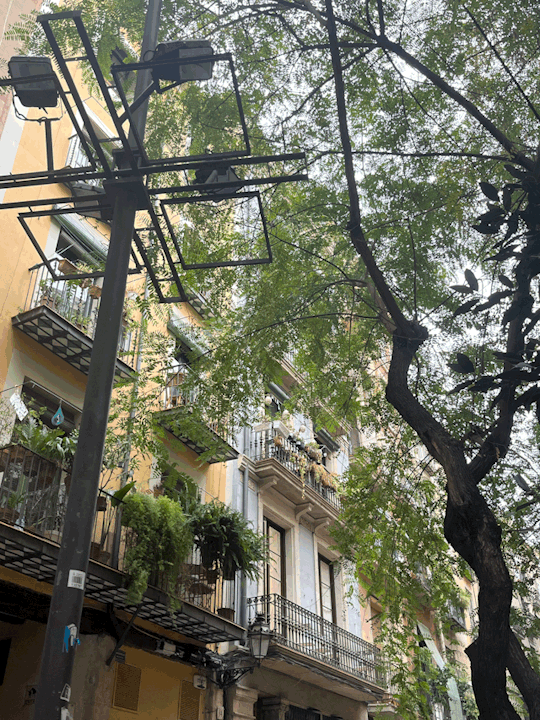
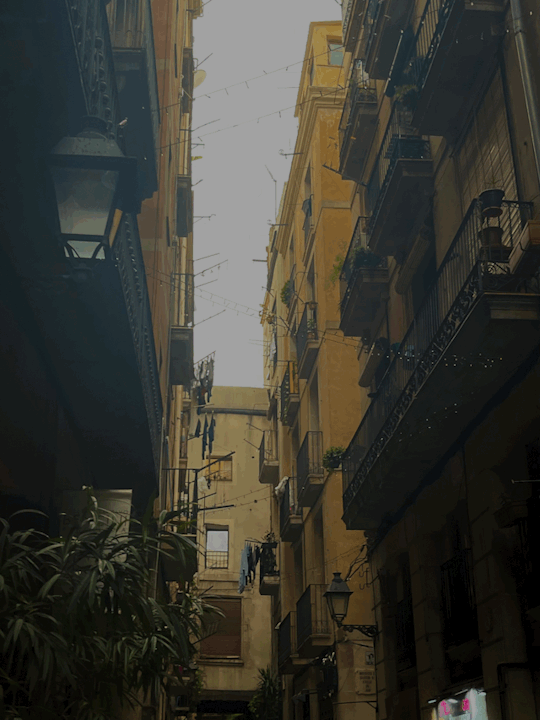
Many places in this quarter of the city of Barcelona hold a great deal of cultural significance. For example, the Santa Maria Del Mar, a beautiful gothic style church constructed between 1329-1383, and its construction efforts were contributed to by the entirety of the Ribera inhabitants.
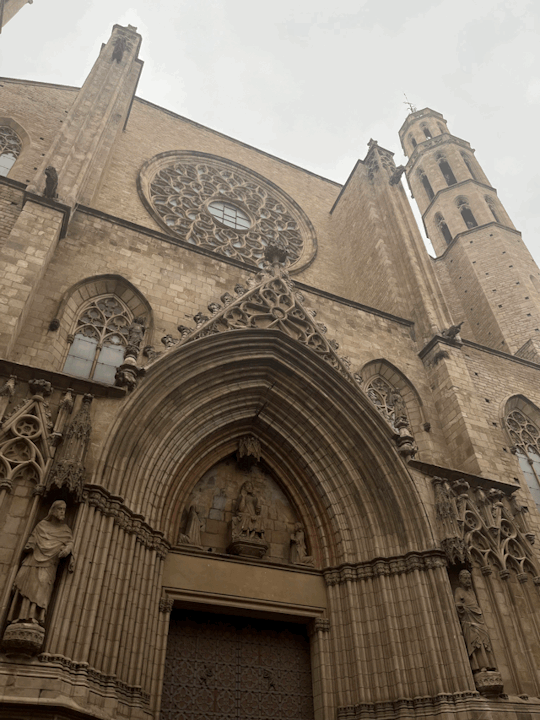

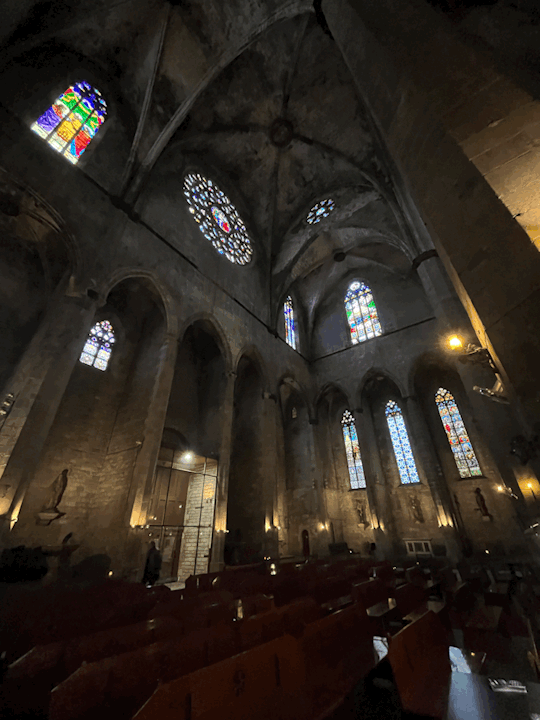
El Mercat del Born is also a very significant space for Catalan Culture in this quarter. This was used as a central space for all of the craftsmen to sell their goods. This market was opened in 1876 and was a wholesale market for the inhabitants of la Ribera, but in 1921 it became Barcelona's main fruit and vegetable market. Today, it serves as a cultural center to view and learn about the medieval times and old roads that were demolished when King Phillip destroyed that neighborhood following September 11, 1714.
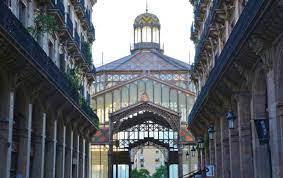
El Fossa de les Moreres is a plaza next to the Santa Maria Del Mar that serves as a memorial for the Catalan soldiers that died defending the city during the siege of Barcelona in 1714. The memorial features an eternal flame that burns in memory of these brave individuals who lost their lives in attempt to preserve Catalan independence.

Parc Ciutadella is also a very important location in this quarter for Catalan Culture. Following the Siege of Barcelona in 1714 by King Phillip V, who won his throne during the War of Spanish Succession, Phillip V destroyed the neighborhood where Ciutadella Park stands now and created a giant military base named the Citadel that could hold over 8000 soldiers as retaliation to the people of Barcelona for fighting against him. In 1869 the political situation had changed, and the people of Barcelona decided to create a park where the citadel had once stood to reclaim the space for the people of the city and celebrate Catalan Culture, rather than maintain a building that signified hate.
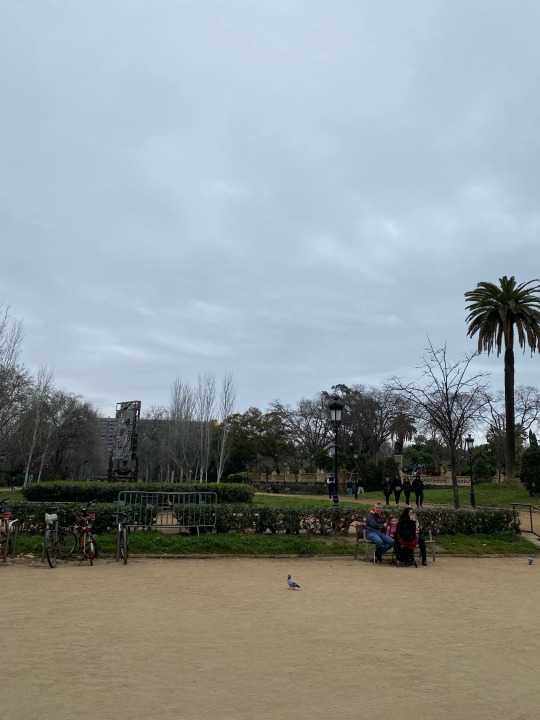
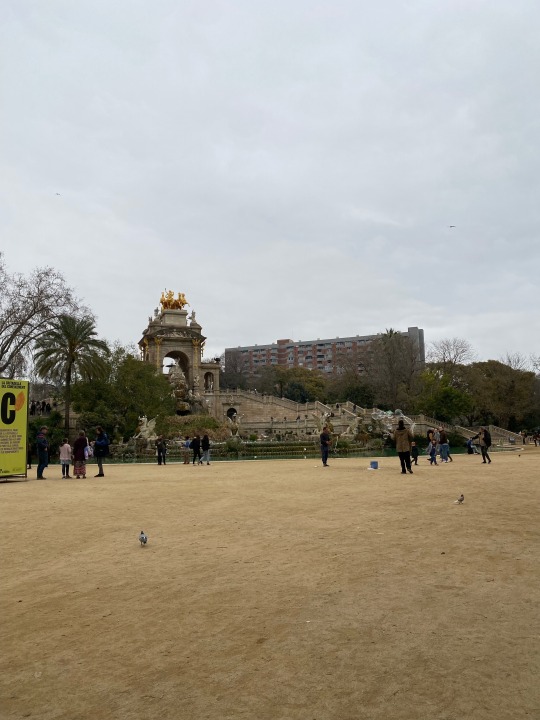
After September 11, 1714, King Phillip V put forth a set of decrees called Nova Planta that drastically changed Catalan society. Firstly, these laws abolished the courts, municipal council, and government that was in place before Phillip V invaded. Next, Castille and Aragon no longer had any distinction between each other, and Castilla laws were imposed on the people. All Catalan universities were closed and replaced with Cervera, and the use of Catalan language was banned from public documents.
El Consolat de Mar was a place in the Middle Ages that serves as a space to settle business disputes between merchants without them having to go to official courts. This served as a facilitator of successful business, which led to progress in the economy and society.
0 notes
Text
Roman History in Catalunya -- Feb 6th
The Roots of Catalunya -- MUHBA
While visiting the MUHBA, I noticed a series of comparisons between ancient Roman engineering and Catalan engineering today. One of which being the repurposing of spaces, such as how the Romans repurposed a shop and turned it into baths. Our modern culture uses this type of space recycling today as well, such as Palau Recasens, which used to be a medieval castle and is now the headquarters of the Royal Academy of Fine Arts.
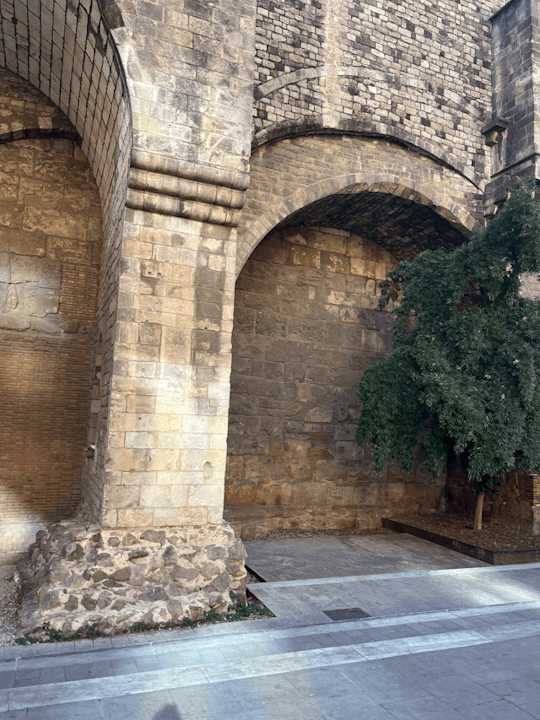


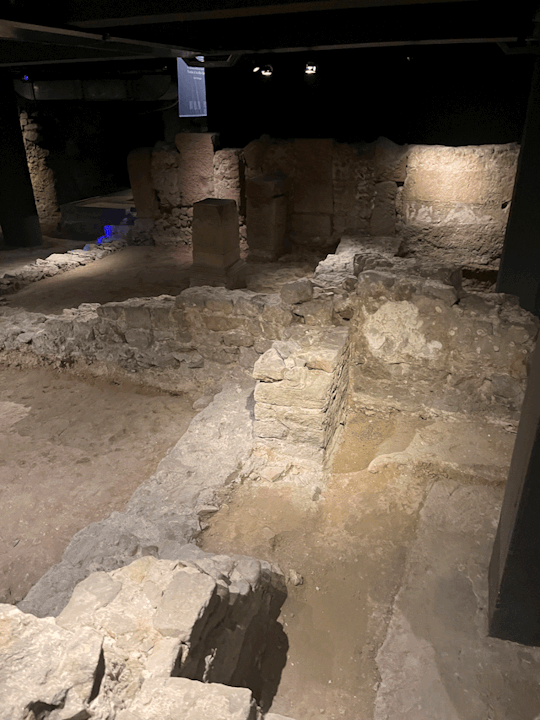
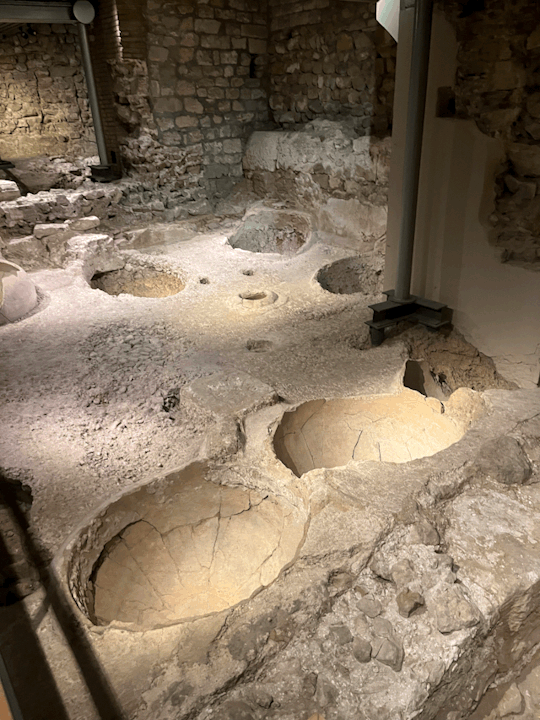
Roman Religious Artifacts:
Roman artifacts found in MUHBA exemplify how Romans switched from polytheism to monotheism, Christianity to be exact. This change was important to maintain social control in the community as Christian ideals were more popular amongst the common/poorer people, aka the majority. It was also another indirect measure of social control for the people in power in Roman Catalunya to stay in these positions.

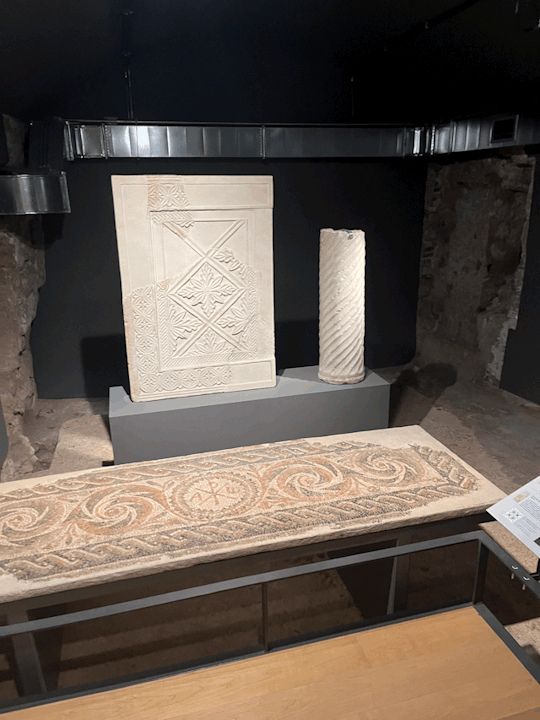

Construction Similarities in Barcelona Today:
Interestingly, many of the buildings in Catalunya today are reminiscent of Roman architecture and engineerings. For example, there are a multitude of buildings that use columns as decoration, which traces back to Roman influence. However, most of these columns are not functionally used, and instead solely for decoration purposes. Even modern stores such as Mango have the column designs as well, despite no real architectural/engineering purpose. Also, the stones on many buildings around the city are clearly influenced by Roman construction, such as the wall next to Zapaori where the exposed stones are similar to the first photo of ancient architecture. Finally, and most predominantly, are the Cardo Minor public spaces, which are shown in the second photo and reference to the stores and shops in Roman societies that are open facing to the streets and public. While I took one photo of an open store on the street in Barcelona today, they can be found almost everywhere with the same design and open-air design to display goods and invite the public to come in and shop. The United States also has some traces of Roman influence in architecture, as it is evident most historical and official buildings resemble Roman structures with the columns, arches. However, most cities and towns are not as influenced by ancient Romans like Catalunya is, presumably because the Romans did not inhabit spaces/territories in the Unites States such as they did in Barcelona to leave as much of a lasting impact.

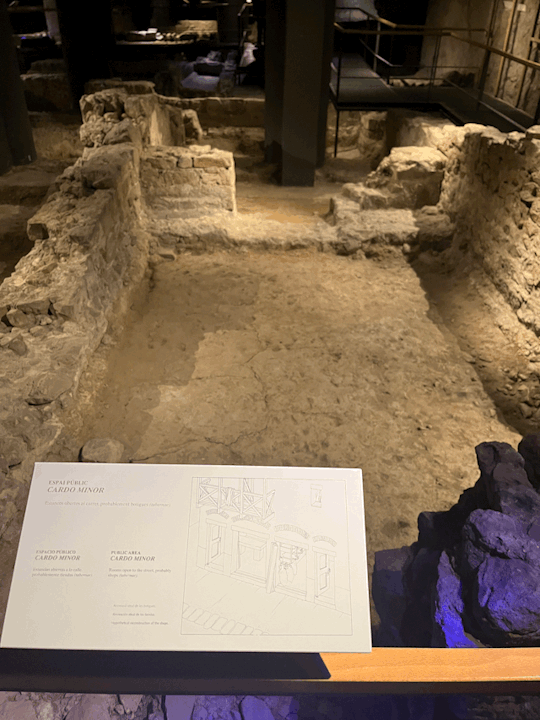
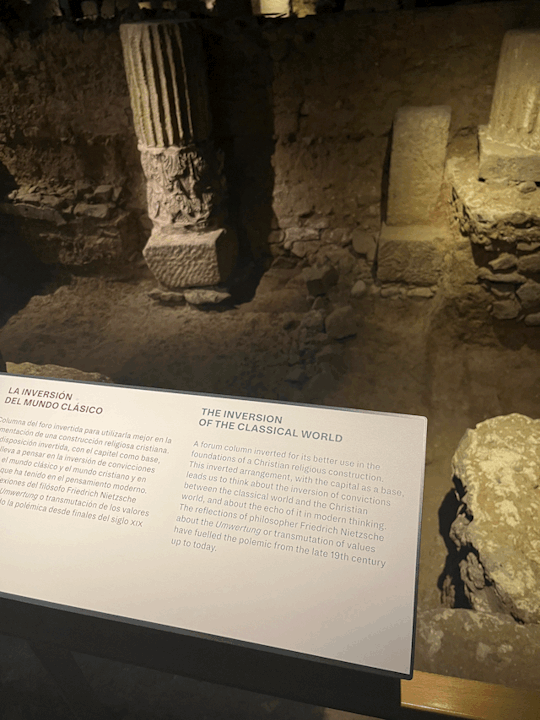

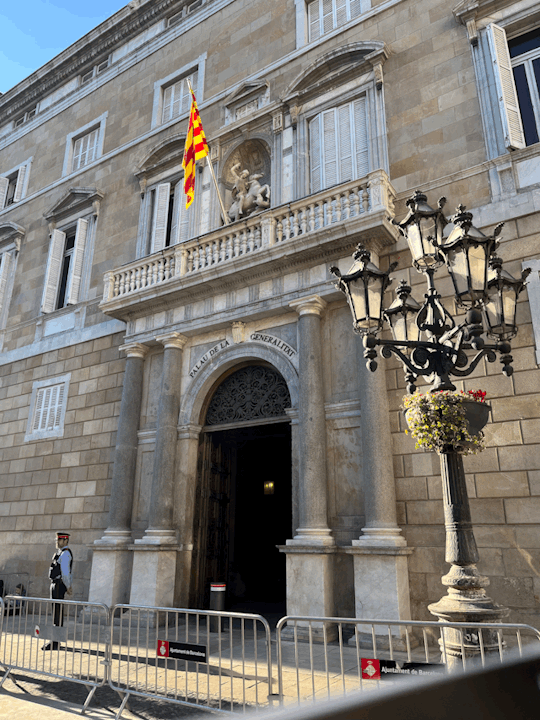

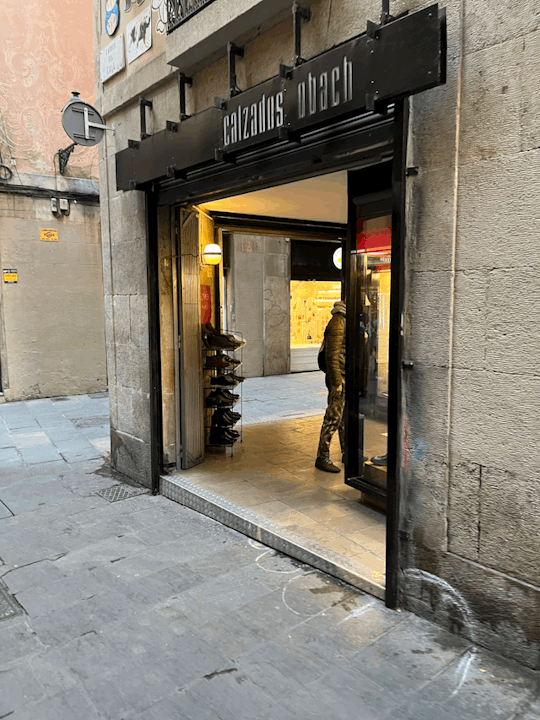

Roman Houses:
In a typical Roman house, or Domus, there was a room specifically dedicated to preparing food. This was called the culina, where all of the food was cooked in a small, well equipped space. This food was consumed in the triclinium, a dining room that was the most important area in the Domus. These rooms were designed to be lavish, well decorated, and indicative of the social status for the home owner. Additionally, they had inner courts called atriums that served as important spaces for family activity in winter, as well as storage of water in pools called impluviums. In the summer, family activity was mainly based out of the peristylium, which was a courtyard at the back of the house that often had a pool of water and a garden in an open-air space well equipped for social gatherings. There was also a tablinum, a formal room that was only for the owner of the Domus, which would be used as a study and meeting room.
Domestic Objects:
The MUHBA displays a wide variety of ancient roman domestic objects, such as spoons, tea pots, children's toys, decorative ornaments, rings, hairpins, vases and containers for personal beauty/image care, bowls and plates, wine jugs, and decorative appliqués for furniture. I was very interested in this section of the museum, as the juxtaposition between domestic objects in our modern society and Ancient Roman societies is notably different in the sense of technological advancements, yet still comes from the same origins. For example, I personally found the items of personal image care to be quite captivating as they resemble similar items that I use every day for myself, and to imagine people were doing the same back in ancient Roman societies is fascinating. Also, the decorative appliqués for furniture surprised me quite a bit, considering the intricacies and details each one harbors. After learning about the Domus, I can only imagine these were scattered in tricliniums, as such beautifully crafted objects would be well suited to a room dedicated to being lavish and communicative of the homeowners social status.



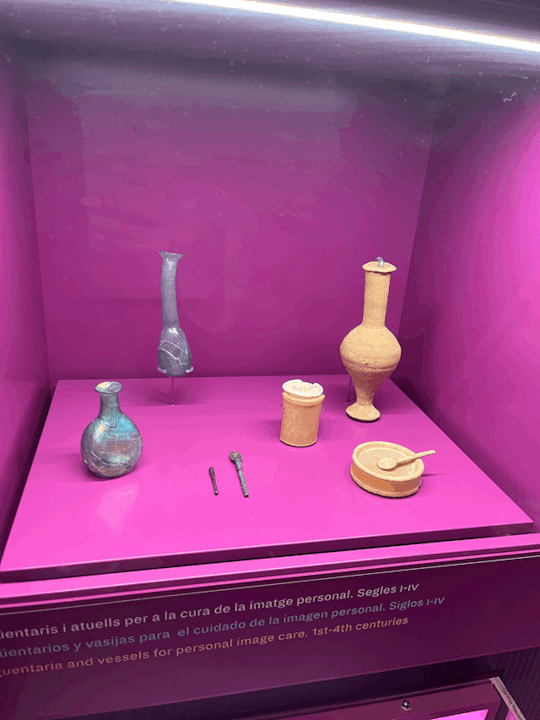

Roman Wine Culture:
In ancient Roman societies, wine was incredibly important. Not only did it function as a part of the active economy of Barcino, but it was also deeply embedded in daily culture. The room dedicated to wine production and cellars was astoundingly large, a testament to the role that it played in the ancient society. This tradition has carried over into modern society, as we can see the prevalence and importance of wine in day to day life. Many people will have wine with dinner, for celebratory purposes, and even produce or purchase homemade wine from local vineyards in Catalunya. Two brands that are a great example of this are Scala Dei Priorat and Mas Miralda Cava. Wine is also important to Christianity as well, as it is used in the religious service as a metaphor for the blood of christ.


Visigothic Baptism Pool:
This ancient Visigothic baptism pool from the 4th century a. d. was revamped in the 5th century to change it from a square to an octagonal shape. Then, as Christianity continued to grow in importance in Catalan Culture, the steps were added a century later to resemble the shape of a cross.
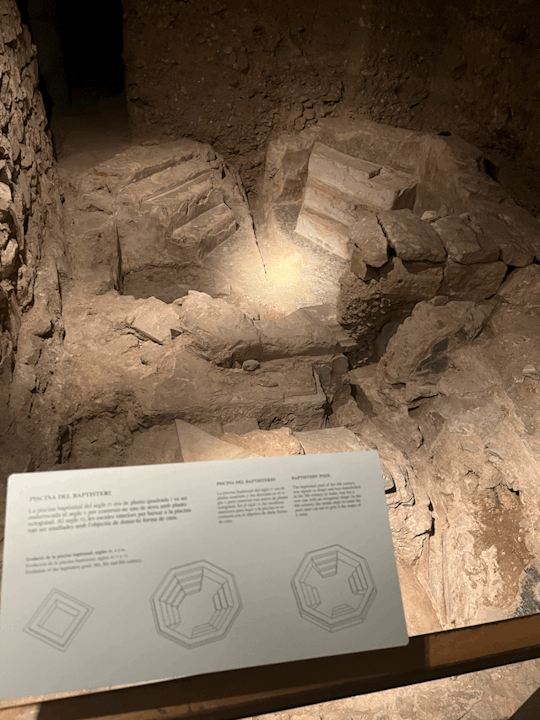
1 note
·
View note